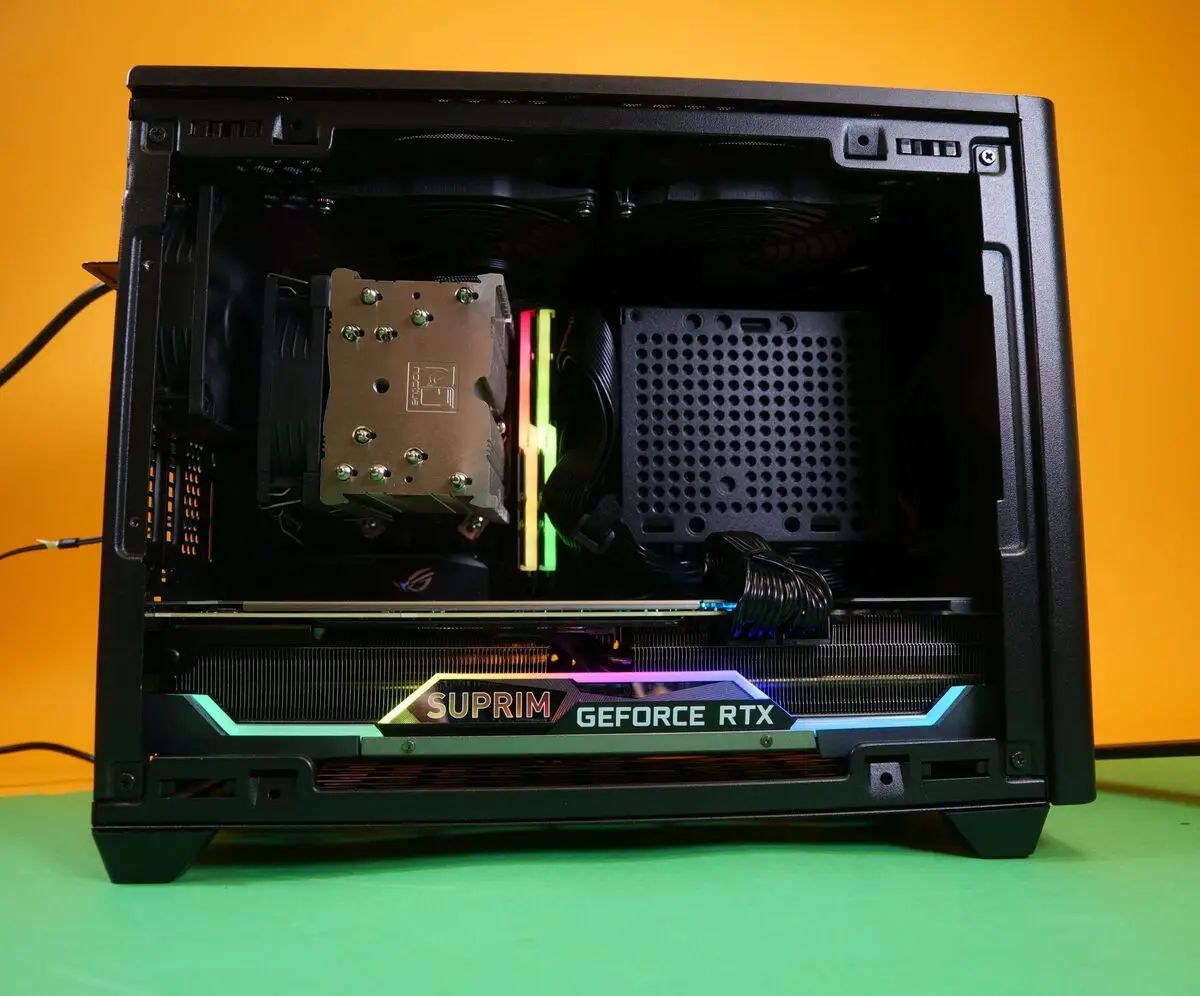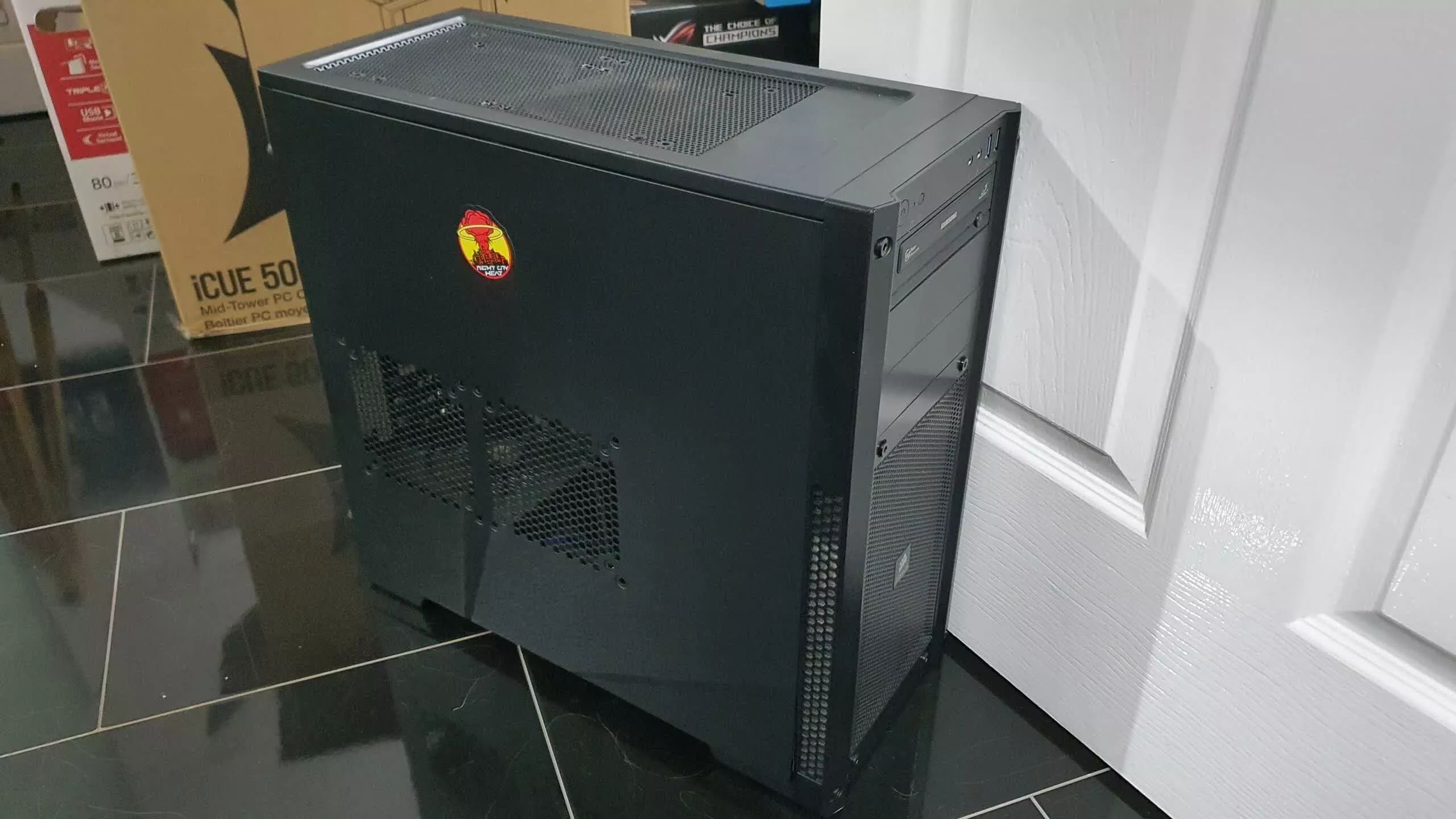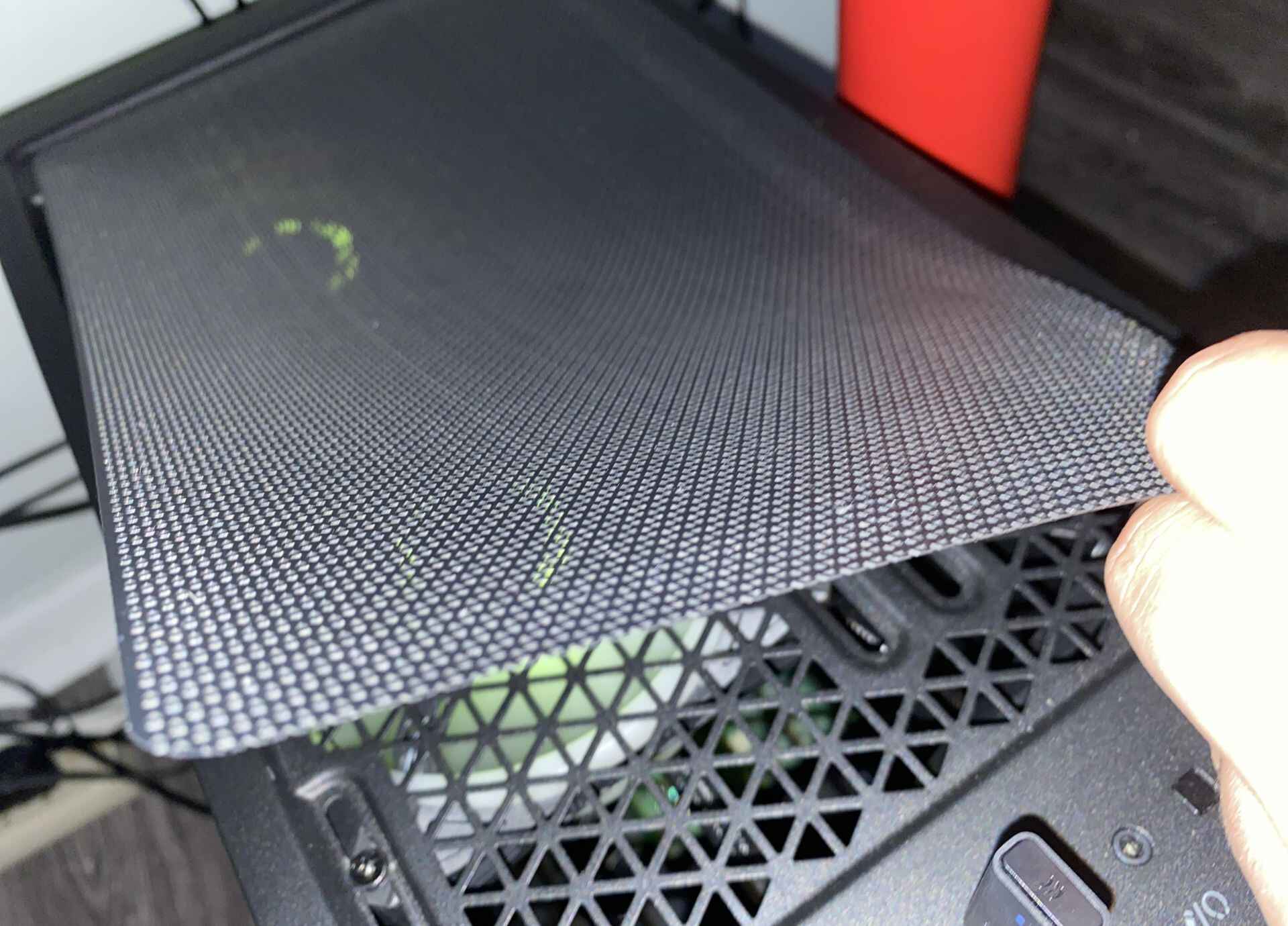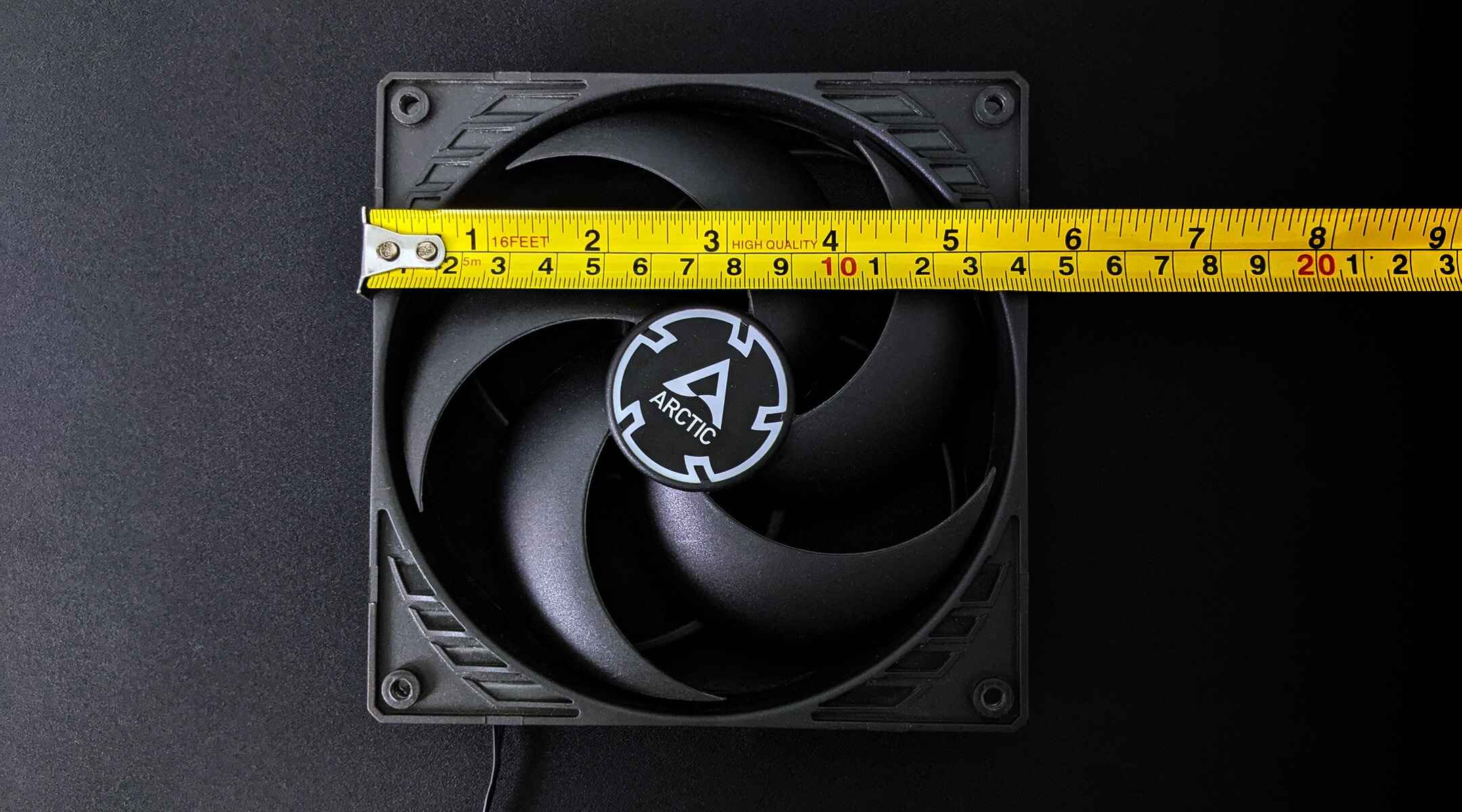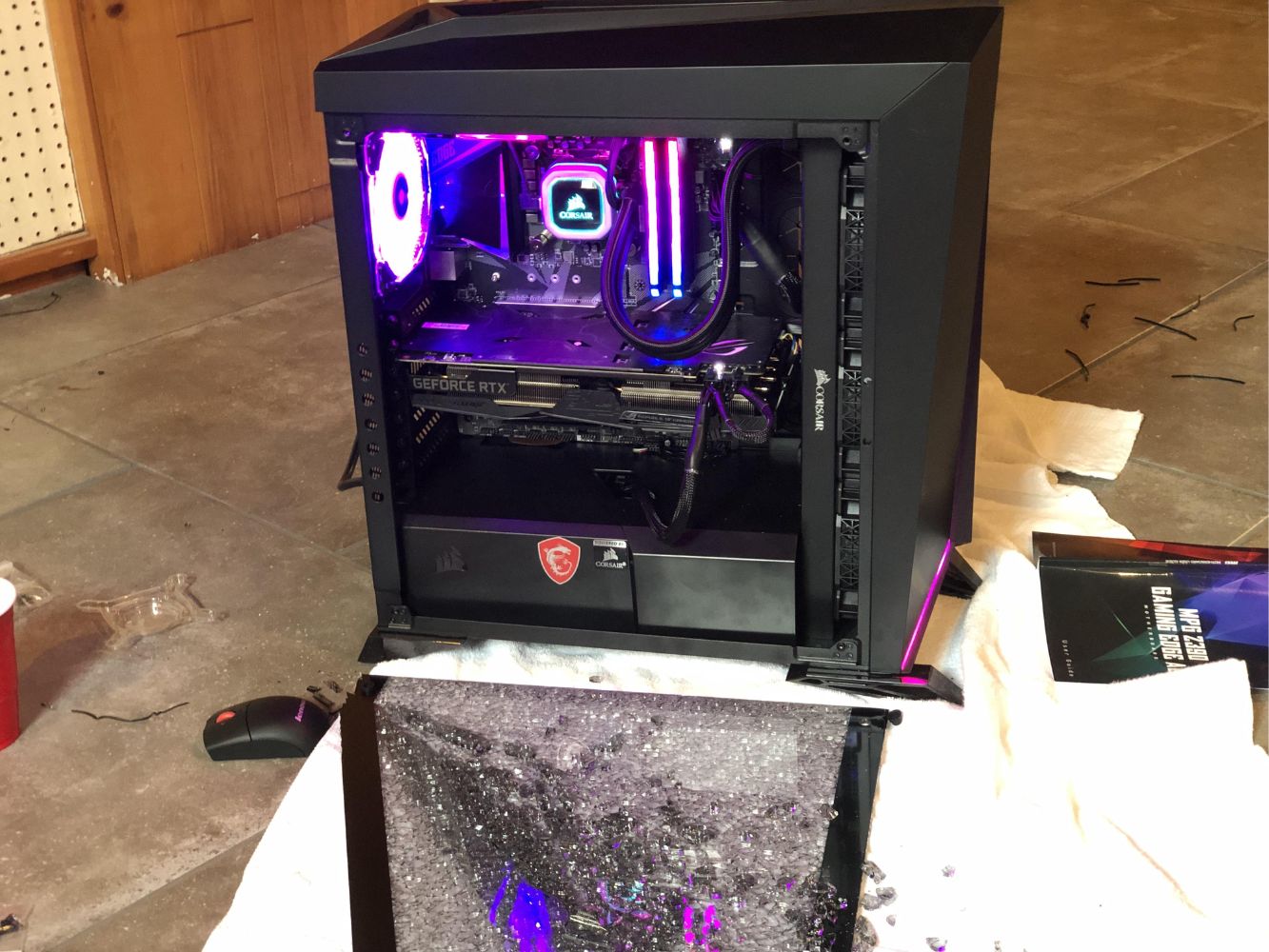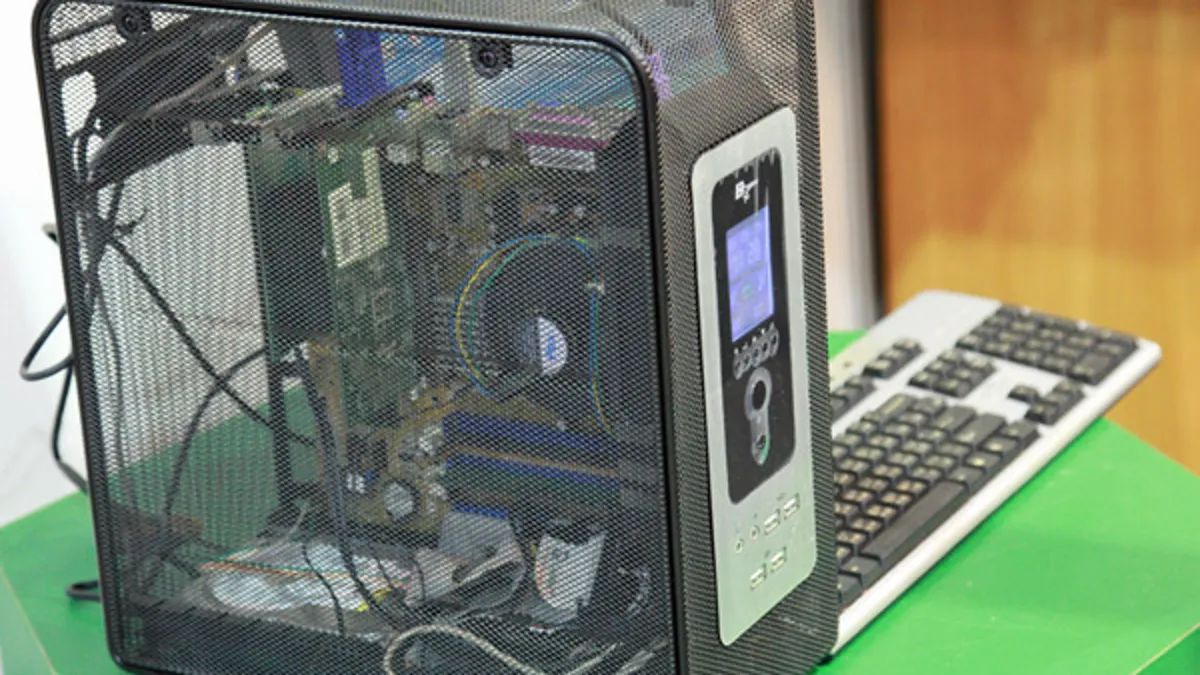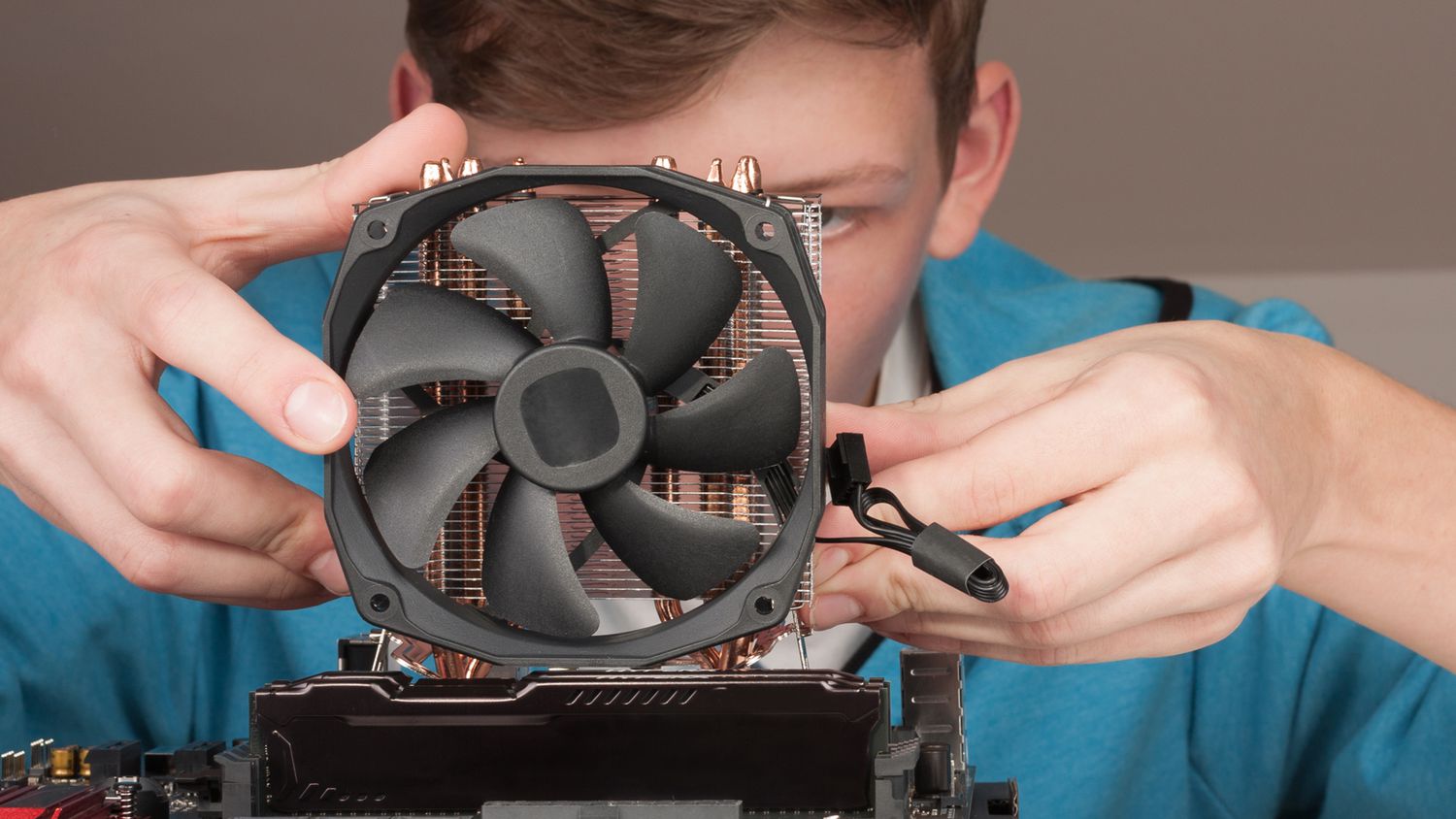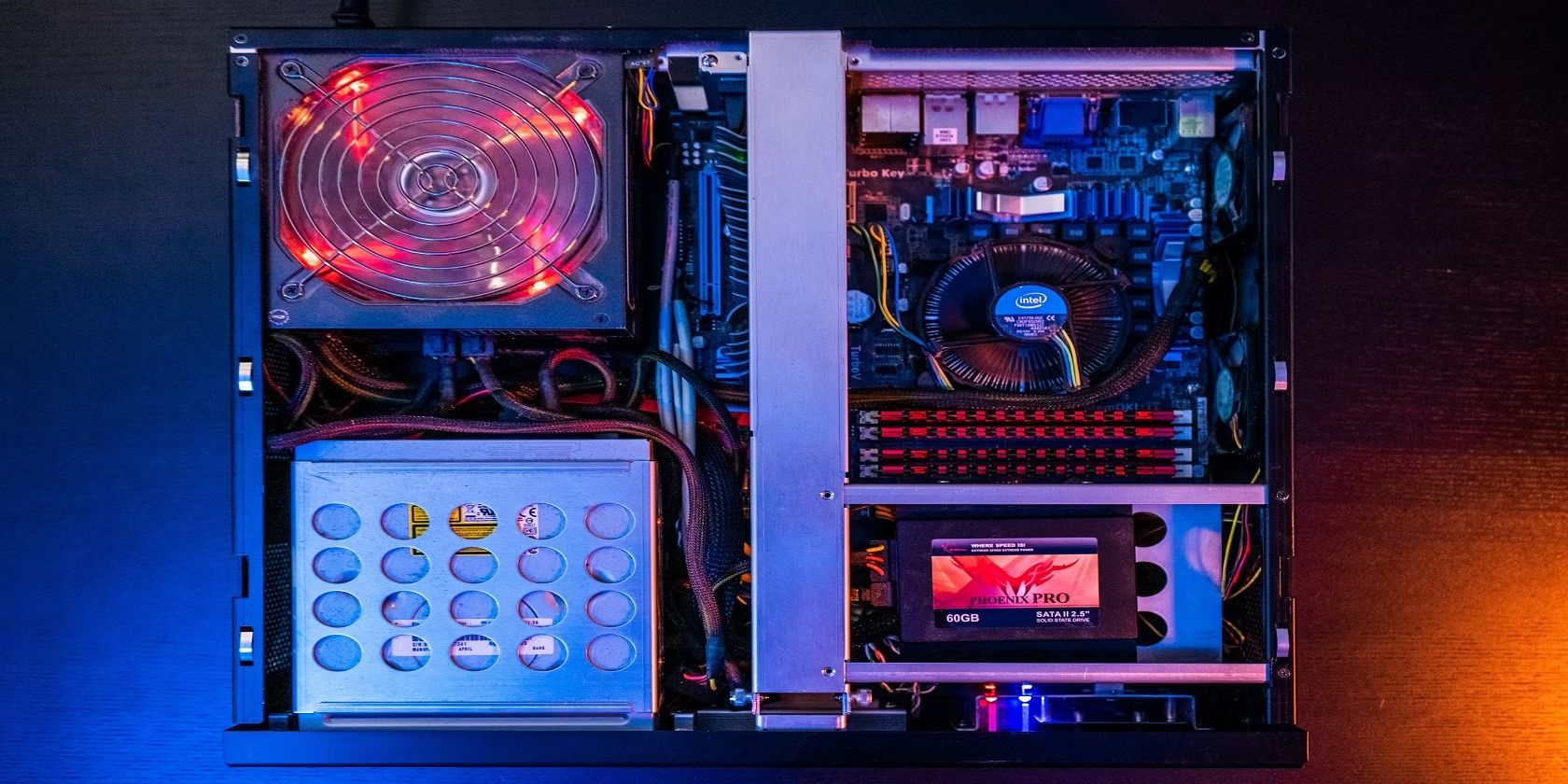Introduction
Welcome to the world of PC cases, where size matters and form factors are key. If you’re a computer enthusiast or someone looking to build your own PC, understanding how PC cases are measured is crucial. PC cases come in various sizes and shapes, designed to accommodate different hardware configurations and cooling requirements.
When it comes to PC cases, the saying “bigger is better” doesn’t necessarily hold true. The size of a PC case is determined by its form factor, which refers to the dimensions and layout of the case. Whether you’re building a gaming rig or a compact workstation, choosing the right form factor is essential for optimal performance and aesthetics.
In this article, we will explore the different aspects of measuring PC cases, including their external and internal dimensions, motherboard compatibility, GPU clearance, CPU cooler clearance, cable management space, drive bays, power supply compatibility, and cooling options. Understanding these measurements will help you make an informed decision when selecting a PC case that fits your specific needs and preferences.
So, let’s dive headfirst into the world of PC case measurements and unravel the mysteries behind their dimensions and compatibility requirements. By the end of this guide, you’ll be equipped with the knowledge to confidently choose the perfect PC case for your next build.
Size and Form Factor
When it comes to PC cases, size and form factor are essential considerations. The size of a PC case determines the amount of hardware it can accommodate, while the form factor refers to the overall dimensions and layout of the case.
PC cases come in various sizes, ranging from small form factor (SFF) cases designed for compact builds to full tower cases that can house a multitude of components. The most common form factors are Mini-ITX, Micro-ATX, ATX, and Extended ATX (E-ATX).
Mini-ITX cases are the smallest, designed for ultra-compact builds. They can fit a single Mini-ITX motherboard and have limited space for other components. These cases are ideal for those looking to build a portable or space-constrained system.
Micro-ATX cases are slightly larger and can accommodate both Micro-ATX and Mini-ITX motherboards. They offer more expansion slots and support for additional hardware, making them a popular choice for budget-friendly builds.
ATX cases are the most common form factor, offering ample space for ATX motherboards and multiple expansion slots. These cases provide a good balance between size and flexibility, making them suitable for a wide range of builds.
E-ATX cases are the largest form factor, capable of accommodating larger motherboards with more expansion slots. They are ideal for enthusiasts and professionals who require extensive hardware configurations, such as multiple graphics cards or storage drives.
When selecting a PC case, it’s crucial to consider the available space in your setup. If you have a smaller desk or limited space, opting for a smaller form factor like Mini-ITX or Micro-ATX can help maximize your workspace. On the other hand, if you have ample room and plan to build a high-performance system, a larger ATX or E-ATX case might be more suitable.
Now that you understand the basics of PC case size and form factor, let’s delve deeper into the specific measurements and dimensions you need to consider.
External Dimensions
The external dimensions of a PC case refer to its overall size and footprint. These measurements are crucial for determining whether the case will fit in your desired location and blend seamlessly with your setup.
PC cases typically have three main external dimensions: height, width, and depth. These measurements are usually provided in millimeters (mm) or inches (in).
The height of a PC case refers to its vertical measurement from the bottom to the top. It determines how much vertical space the case will occupy on your desk or the area where you plan to place it. Make sure to measure the available space and compare it to the height of the case to ensure it fits comfortably.
The width of a PC case refers to its horizontal measurement from one side to the other. This dimension determines how much space the case will occupy horizontally, so it’s important to consider the available desk or floor space. Additionally, ensure that the width is wide enough to accommodate the components you plan to install, such as a large CPU cooler or multiple graphics cards.
The depth of a PC case refers to its front-to-back measurement. It determines how far the case extends into your workspace or the area where you plan to place it. This dimension is essential for ensuring that the case doesn’t protrude too much or interfere with other objects, such as a wall or monitor.
When selecting a PC case, it’s important to consider the external dimensions in relation to your available space and setup requirements. If you have limited space, opting for a smaller or more compact case can help optimize your workspace. However, if you have ample room and want to showcase your components or have more expansion options, a larger case might be a better fit.
Furthermore, some PC cases may have additional external features, such as front-panel ports (USB, audio, etc.), RGB lighting, or tempered glass side panels. These elements can add to the overall dimensions and aesthetic appeal of the case, so it’s essential to consider them when assessing the external dimensions.
In the next section, we will explore the internal dimensions and how they play a crucial role in determining the compatibility and ease of installation for your hardware components.
Internal Dimensions
The internal dimensions of a PC case are just as important as the external dimensions when it comes to compatibility and ease of installation for your hardware components. It’s crucial to ensure that the case offers enough space to accommodate your motherboard, graphics card, CPU cooler, drives, and other components.
One of the key internal dimensions to consider is the motherboard compatibility. PC cases are designed to support specific motherboard form factors, such as Mini-ITX, Micro-ATX, ATX, and E-ATX. The case should have the necessary mounting holes and standoffs to securely hold your chosen motherboard.
Additionally, the GPU clearance is another important measurement to consider. It refers to the maximum length of a graphics card that the case can accommodate. For gaming enthusiasts or those who work with graphic-intensive applications, it’s crucial to ensure that your chosen case can fit your desired graphics card without any clearance issues.
The CPU cooler clearance is another crucial dimension to check. It refers to the maximum height of a CPU cooler that the case can accommodate. If you’re planning to use an aftermarket or larger CPU cooler for better heat dissipation and performance, make sure it fits comfortably within the case without interfering with other components, such as the side panel or RAM modules.
The cable management space is often overlooked but plays a significant role in keeping your build clean and organized. It refers to the available space behind the motherboard tray or designated cable routing holes where you can route and manage your cables. Sufficient cable management space allows for better airflow and helps in creating a neat and tidy build.
Drive bays are another aspect of internal dimensions to consider. They refer to the slots or areas within the case where you can install storage drives, such as SSDs or HDDs. Ensure that the case has enough drive bays to support your storage needs.
Power supply compatibility is also important to check. It refers to the supported form factor and size of the power supply (PSU) that the case can accommodate. It’s crucial to ensure that your chosen case can fit your desired PSU without any compatibility issues.
By considering the internal dimensions of a PC case, you can ensure that your hardware components fit comfortably and that you have enough space for proper airflow and cable management. These dimensions play a vital role in building a functional and efficient system.
In the next section, we will explore specific compatibility considerations, such as motherboard form factors and GPU clearances, in more detail.
Motherboard Compatibility
When selecting a PC case, one of the most critical factors to consider is motherboard compatibility. The motherboard is the central hub that connects and houses all your hardware components, making it essential to ensure that it fits perfectly within the case.
PC cases are designed to support specific motherboard form factors, typically Mini-ITX, Micro-ATX, ATX, and E-ATX. Each form factor has different dimensions and mounting hole placements, so it’s important to choose a case that matches your motherboard’s form factor.
Mini-ITX is the smallest form factor, designed for compact builds. It has a maximum size of 170mm x 170mm and typically supports a single PCIe slot. These cases are ideal for those who prioritize space-saving and portability.
Micro-ATX is slightly larger than Mini-ITX and offers more expansion slots. It has a maximum size of 244mm x 244mm and can accommodate Micro-ATX and Mini-ITX motherboards. These cases are a popular choice for budget-friendly builds that require additional hardware expansion.
ATX is the most common form factor and offers more space for components. It has a maximum size of 305mm x 244mm and can accommodate ATX, Micro-ATX, and Mini-ITX motherboards. These cases provide a good balance between size and flexibility, suitable for a wide range of builds.
E-ATX is the largest form factor, designed for enthusiasts and professionals who require extensive hardware configurations. It has a maximum size of 305mm x 330mm or larger and can accommodate E-ATX, ATX, Micro-ATX, and Mini-ITX motherboards. These cases offer ample space for multiple GPUs, storage drives, and other expansion options.
When selecting a PC case, always check the specifications to ensure that it explicitly states compatibility with your motherboard form factor. Additionally, consider other factors such as the placement of I/O connectors, expansion slots, and additional features like M.2 slots or Wi-Fi antennas, to ensure they align with your motherboard layout.
Remember, choosing a case that is compatible with your motherboard form factor ensures a secure and optimal fit, allowing all your hardware components to function properly. In the next section, we will explore GPU clearance and its importance for graphics card compatibility.
GPU Clearance
When building a gaming or graphics-intensive system, the compatibility between your chosen PC case and graphics card is crucial. The GPU clearance, also known as the maximum GPU length, determines the maximum size of the graphics card that the case can accommodate.
Graphics cards come in various sizes, and some high-performance models can be quite large. It’s essential to ensure that the case you choose has enough space to fit your desired graphics card without any clearance issues.
To determine the GPU clearance of a PC case, check the specifications provided by the manufacturer. The GPU clearance is typically measured from the back of the case to a specific point within the case, such as the drive cage or the front panel.
It’s important to note that the GPU clearance can vary depending on the specific case and its design. Some cases may have removable drive cages or modular layouts that allow for additional clearance when needed. Be sure to consider any potential obstacles, such as fans or radiators, that could limit the available space for your graphics card.
Having sufficient GPU clearance is essential for several reasons. First, it ensures that your graphics card fits properly within the case, preventing any physical conflicts or damage. Second, it allows for proper airflow around the graphics card, helping to keep temperatures at optimal levels and ensuring optimal performance.
When choosing a PC case, consider the length of your desired graphics card and compare it to the GPU clearance of the case. It’s recommended to leave some extra room for ease of installation and potential future upgrades. If you’re planning to use a high-end or oversized graphics card, look for cases with ample GPU clearance or even adjustable/removable drive cages to accommodate your needs.
By considering the GPU clearance, you can ensure that your graphics card fits properly within the case and allows for optimal performance. In the next section, we will explore another crucial dimension to consider: CPU cooler clearance.
CPU Cooler Clearance
When it comes to keeping your processor cool, a CPU cooler is an essential component in your system. However, it’s important to ensure that the PC case you choose has enough clearance to accommodate your chosen CPU cooler.
The CPU cooler clearance refers to the maximum height of a CPU cooler that the case can accommodate. This measurement is crucial because larger coolers, such as tower coolers or all-in-one liquid coolers, require more vertical space within the case.
Before selecting a CPU cooler, it’s best to check the specifications of the case to determine the CPU cooler clearance. The clearance is the distance from the top of the motherboard to the side panel or any potential obstruction within the case.
If the CPU cooler is too tall for the case, it can cause issues such as the side panel not closing properly or interfering with other components like RAM modules. This can lead to poor airflow and potentially impact the cooling performance of your system.
When choosing a CPU cooler, consider the height of the cooler and ensure it is within the CPU cooler clearance provided by the case. It’s also worth noting that some cases might have cut-outs or removable panels around the CPU socket area to accommodate larger coolers.
If you plan to use an aftermarket or larger CPU cooler for better cooling efficiency and performance, it’s essential to choose a case with enough CPU cooler clearance to accommodate it comfortably. This will help ensure proper cooling and prevent any compatibility issues.
Additionally, if you’re using a liquid cooling solution such as an all-in-one liquid cooler or custom loop, consider the clearance required for mounting the radiator and fans. These cooling solutions might have specific clearance requirements for the radiator, fans, and tubing.
By checking the CPU cooler clearance of a PC case and selecting a cooler that fits within that limit, you can ensure optimal cooling performance and a smooth installation process. In the next section, we will explore the importance of cable management space in a PC case.
Cable Management Space
One often overlooked aspect of a PC case is the available cable management space. Proper cable management is essential for a clean and organized build, as it allows for better airflow, easier maintenance, and an overall aesthetically pleasing setup.
Cable management space refers to the area behind the motherboard tray or designated cable routing holes within the case. It provides a dedicated space for routing and securing cables, ensuring they are neatly organized and tucked away.
Having sufficient cable management space has several benefits. First, it allows for better airflow within the case by preventing cables from obstructing the path of cool air. Improved airflow helps keep temperatures lower, leading to optimal performance and longevity of your components.
Second, proper cable management makes it easier to access and maintain your components. Neatly routed cables reduce the chances of accidentally disconnecting or damaging any connections while performing upgrades or maintenance.
Furthermore, a clean and organized build enhances the overall visual appeal of your PC. With cables neatly tucked away and hidden from view, the interior of the case looks more streamlined and professional.
When selecting a PC case, look for features that prioritize cable management, such as ample cable routing holes, tie-down points, and Velcro straps. Cases with a spacious interior or dedicated cable management channels can also make cable management much easier.
It’s important to plan your cable management strategy before building your system. Consider the lengths of your cables, the placement of your components, and how you want to route and secure the cables. This will help you determine how much cable management space you’ll need.
Proper cable management can take some time and effort, but the end result is worth it. Your build will not only look cleaner and more professional, but also function better with improved airflow and easier maintenance.
In the next section, we will explore the importance of drive bays and their role in storage options within a PC case.
Drive Bays
When it comes to storage options in a PC, drive bays play a crucial role. Drive bays are the slots or areas within a PC case where you can install storage drives, such as solid-state drives (SSDs) or hard disk drives (HDDs).
The number and type of drive bays available in a PC case can vary depending on the case design and form factor. It’s important to consider your storage needs and choose a case that can accommodate your desired number and type of drives.
Traditional drive bays are typically 3.5-inch in size and are designed for installing HDDs. These bays allow for easy installation and removal of hard drives, providing ample space to store large amounts of data.
On the other hand, smaller drive bays, usually 2.5-inch in size, are designed for SSDs. SSDs are faster and more compact than HDDs, making them an ideal choice for operating system installations and applications that require faster data access.
When evaluating a PC case’s drive bay options, consider the number of drive bays available and the type of drives they support. Some cases may have dedicated spots for specific drive types, while others offer flexibility, allowing you to mix and match between SSDs and HDDs.
Additionally, modular cases offer the advantage of adjustable or removable drive cages. These cages can be reconfigured or entirely removed to provide more space for other components or to allow for different drive configurations.
It’s also worth noting that some PC cases might have additional drive options, such as dedicated M.2 slots on the motherboard or tool-less drive bays that simplify the installation process. These features can help optimize the storage capabilities of your system.
Before selecting a PC case, assess your storage requirements and determine the number and type of drives you’ll be using. This will help you choose a case that provides adequate drive bays to accommodate your storage needs.
Having sufficient drive bays in your PC case ensures that you have enough storage capacity for your files, applications, and games. It also allows for easy installation and organization of your drives, keeping your system clutter-free.
In the next section, we will explore power supply compatibility and its importance in selecting a PC case.
Power Supply Compatibility
When choosing a PC case, it is crucial to consider power supply compatibility. The power supply unit (PSU) is responsible for supplying power to all the components in your system, making it an essential component to consider for a successful build.
PC cases are designed to support specific form factors and sizes of power supplies. The most common form factors for power supplies are ATX, SFX, and TFX.
ATX power supplies are the most common and widely used form factor. They come in various wattages and sizes, ranging from standard ATX to larger ATX/EPS power supplies. Most PC cases are designed to accommodate standard ATX power supplies.
SFX power supplies are smaller and more compact than ATX power supplies. They are commonly used in small form factor builds or cases that have size restrictions. SFX power supplies are generally more expensive than their ATX counterparts.
TFX power supplies are even smaller than SFX power supplies and are typically used in slim or low-profile cases. They are designed for space-constrained enclosures that require a thinner power supply.
When selecting a PC case, check the specifications to ensure it supports the form factor of your chosen power supply. Additionally, consider the length and depth of the power supply, as some cases may have limitations in terms of clearance or dedicated mounting areas.
It’s essential to select a power supply that meets the power requirements of your system. Consider factors such as the number of components, their power consumption, and any future upgrades you may have in mind. This will help ensure your power supply can handle the demands of your system comfortably.
Furthermore, modular power supplies offer the advantage of customizable cable management. They allow you to use only the necessary cables, reducing clutter and improving airflow within the case. Make sure the PC case you choose has provisions for cable management and can accommodate modular power supplies.
By ensuring power supply compatibility, you can build a system that receives stable and reliable power, providing optimal performance and longevity for your components.
In the next section, we will explore the various cooling options that PC cases provide for efficient heat management.
Cooling Options
Efficient heat management is essential for maintaining optimal performance and longevity of your components. PC cases offer various cooling options to help dissipate heat generated by the processor, graphics card, and other hardware.
The cooling options available in a PC case can include fans, liquid cooling solutions, and ventilation systems. Let’s explore each of these in more detail:
Fans: Fans are the most common cooling option in PC cases. They come in various sizes, typically 120mm or 140mm, and can be mounted in different locations within the case, such as the front, rear, top, or side panels. The number and arrangement of fans vary depending on the case and its design. Fans help circulate air throughout the case, dissipating heat and keeping components cool.
Liquid Cooling: Liquid cooling solutions, such as all-in-one (AIO) liquid coolers or custom loop setups, offer enhanced cooling performance. They consist of a radiator, tubes, and a pump that circulates liquid to cool the CPU or graphics card. Liquid cooling provides superior heat dissipation and is especially beneficial for high-performance systems or overclocked setups. It’s crucial to ensure that the case you choose has provisions for mounting radiators and enough clearance to accommodate the liquid cooling solution you plan to use.
Ventilation Systems: Some PC cases feature specialized ventilation systems that optimize airflow and cooling efficiency. These systems may incorporate additional features such as fan filters to prevent dust accumulation, directed airflow design to keep components cool, or adjustable fan speed controls to customize cooling performance based on system requirements.
When selecting a PC case, consider your cooling needs based on your hardware specifications and usage. If you’re planning to build a high-performance system or overclock your components, look for a case that offers sufficient cooling options and has provisions for mounting additional fans or liquid cooling radiators. On the other hand, if you’re building a more modest system, a case with a few well-placed fans might be sufficient.
Ensure that the case design allows for proper airflow and ventilation, with options to route cables efficiently and keep a clean and clutter-free interior. Good cable management can help improve airflow and cooling capacity within the case.
By selecting a PC case with suitable cooling options, you can effectively manage heat generated by your components and maintain optimal performance and longevity for your system.
In the next section, we will wrap up our exploration of PC case measurements and their significance in choosing the right case for your needs.
Conclusion
When it comes to choosing a PC case, understanding and considering the various measurements and compatibility requirements is crucial. By assessing the size and form factor, external and internal dimensions, motherboard compatibility, GPU clearance, CPU cooler clearance, cable management space, drive bays, power supply compatibility, and cooling options, you can make an informed decision and ensure a successful build.
The size and form factor of a PC case determine its footprint and compatibility with different hardware configurations. It’s important to choose a size that suits your space and performance requirements.
External dimensions such as height, width, and depth play a vital role in determining the case’s fit in your workspace or setup. Ensure that the case’s external dimensions complement your available space and desired aesthetic.
The internal dimensions, including motherboard compatibility, GPU clearance, CPU cooler clearance, cable management space, and drive bays, are essential for accommodating your chosen components. Verify that the case can support your hardware choices and offers adequate space for proper installation and cable management.
Power supply compatibility is crucial for supplying consistent and reliable power to your system. Ensure that the case can house your chosen power supply form factor and has enough clearance for cable management.
Finally, cooling options, such as fans, liquid cooling, and ventilation systems, are vital for keeping your system thermally efficient and preventing heat-related issues. Consider the cooling needs of your components and select a case that offers sufficient options for effective heat dissipation.
By considering these measurements and compatibility aspects, you can choose a PC case that meets your specific needs, ensuring a functional, efficient, and visually appealing build. Remember to strike a balance between functionality and aesthetics, allowing for proper component fit and optimal performance.
So, armed with this knowledge, go forth and select the perfect PC case for your next build. Happy building!







